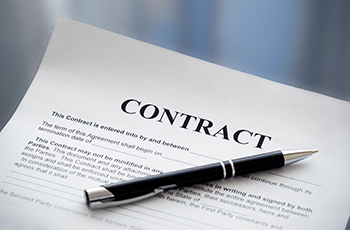Let Me Put it to You This Way...
Posted September 5, 2023

Another reason that people buy options is to have an insurance policy in case there is a sharp drop in their stock’s price. Suppose that you are a manage your own retirement assets and you own 5,000 shares of XYZ stock. You’ve held the shares for decades, and they have appreciated nicely, from a price of $20 to $350. The position total is thus $1,750,000. You also plan to sell the shares to fund the cash needed to close on your retirement residence in five years. Adding to your concern is what you anticipate will be very disappointing earnings report due in six weeks. The widgets made by XYZ recently had a recall and as a result, they have sold no new widgets since.
What to do? If only there was some way to protect your stock position.
Ah, but there is! You can purchase a Put Option.
The Put Option give the owner the right to sell a stock at a certain price until the option expires.
Currently the shares are trading at $350. You know you need to liquidate at a price of $340 or more to have adequate cash to close on your property. So, you decide to buy a the $345 Put on XYZ that expires in two months. That put currently trades for $1.50. The cost to protect the 5,000 shares is $7,500 (1.50 x 5,000.) So, you decide to purchase put options that give you the right to “put” the 5,000 share to the put seller at a price of $345 per share any time during the next two months.
If the stock price drops sharply after the earnings report you are limiting your loss to $5 per share, or $25,000 for the $1,750,000 stock position by purchasing $7,500 worth of put options.
The put seller is confident that the earnings report will not knock the stock price below the $345 mark, in which case she will keep the $7,500 in her account.
Six weeks pass. The earnings are announced. The stock plummets to $320! You immediately exercise your right to put the shares to the put seller who is obliged to pay you $345 for each of the 5,000 shares of stock. Had you held the stock your loss would have been $30 per share, or $150,000. Instead, by purchasing the insurance for $7,500, your loss is limited to $5 per share or $25,000. Including the cost of the puts, your net worth has decreased by $32,500, but it could have been worse, the drop would have been $150,000 without the insurance.
As happy as you may be, the put seller is not. She must have the shares out to her well above market value, and as she accepted the obligation, she is obliged to buy 5,000 shares at $345 by the puts she sold.
Given the above example, you may ask yourself – why would anyone ever sell a put?
We’ll see why in the next post!

